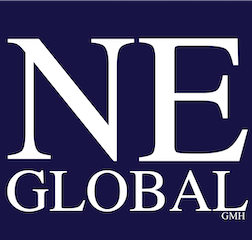New Europe spoke with Ukrainian director Valentyn Vasyanovych, who was back at the Venice Film Festival, with his new film Reflection. Like his 2019 drama, Atlantis, which won Best Picture in the Horizons section and was nominated for an Oscar in 2020, Reflection brings the horrors of the ongoing Russian-Ukrainian war right to the feet of the audience.
While Atlantis was set in 2025, after the imagined end of the war, his latest movie is set in 2014, during the first year of the conflict. Ukrainian surgeon Sergey (Roman Lutsky) is looking for work to cope with his daughter’s problems and finds life difficult when he spends time with his daughter, his ex-wife and new partner. He is captured by Russian military forces in Ukraine’s eastern Donbass region, where he is forced to assist his kidnappers and witness brutal torture and humiliation.
New Europe (NE): Should a director explain his film to the audience or not?
Valentyn Vasyanovych (VV): I believe that a director should create a dialogue with the audience about the film, but not explain it. Instead, a director to share thoughts and opinions and listen to what really comes from outside.
NE: Why did you choose to portray Ukraine’s war with Russia and the cases of torture that have occurred during the conflict?
VV: In the contemporary world, in which we have too much information, “new” news easily becomes “old” news. It is difficult to keep the public’s attention on anything, even a war. The war in Ukraine has been going on for many years now, but no one had ever talked about torture. I think it is absurd that in Europe these inhuman tortures are still happening and are almost more atrocious than the war itself. We no longer talk about the war because it has been there for many years, but it is a duty to tell the public about torture.
NE: Did the UN manage to intervene? Has anything happened since the cases of torture have become known to the public? How is it possible that nothing has been done yet?
VV: It is very difficult for me to accept that there is still torture going on in Europe and that nothing can be done. The only solution to this is to end the war, but what can we do individually? That territory is occupied and no one can face or force the Russian secret services to stop it.
NE: Were you ever afraid to tell this story and show torture in this way?
VV: Personally, I’m not afraid, otherwise I wouldn’t have told it. But I know that there are many Russian agents in Ukraine and I know that anything can happen. Many reporters have been caught for this very reason. I think it’s my mission to tell the world about these tortures. I think there is a way to end the war. We should stop the whole banking system that runs Russia, and everything related to raw materials (i.e. gas, oil), but it is absolutely impossible to achieve.
NE: Regarding the scenes chosen for the film, did you want to create scenes similar to a painting to say that history repeats itself? The photograph was almost reminiscent of a painting by Caravaggio.
VV: No, I wasn’t thinking about the repetition of history, but it is true that I worked on the shots as if they were paintings to better render the atmosphere. When you represent such a cruel theme as torture, in an artistic way, you have to convey that sense of oppression and violence. Aesthetically, I wanted some sort of distance to make it tolerable for the public, despite its violence.
NE: Was this distance that is created in the film able to show torture as it is? Because it actually feels much stronger and harder to bear
VV: I prefer to give a complete picture of the scene because I want the viewer to be attentive to every detail. I prefer to assemble the scene as if it were a mosaic to be built. It is up to the sensitivity of the individual viewer to find the details that strike them the most. So, it depends on the sensitivity of whoever is watching.
NE: In general, colors are used to give a particularly oppressive atmosphere. You always used it as a language in your films. Were you inspired by someone?
VV: I like choosing the right location because I was a director of photography some years ago and that’s what I love to do the most. You can’t shoot a drama in a place full of beautiful colors. The right location is always a good start for a movie.
NE: Was the pigeon story in the film true? What did it mean?
VV: Yes, the pigeon story was true, and it happened while I was with my family. A pigeon crashed into our window and this really affected my daughter, who started asking me a whole series of questions about life and death. The image that the pigeon left on the window was very particular, it looked like that of a small fallen angel. There were feathers and blood left, that inspired me for the title of the film. In practice, the pigeon thought he was flying in the sky and instead crashed into a reflection of it, which is what happens to us when we dream of something or idealize it and then we collide with the reality of things.








